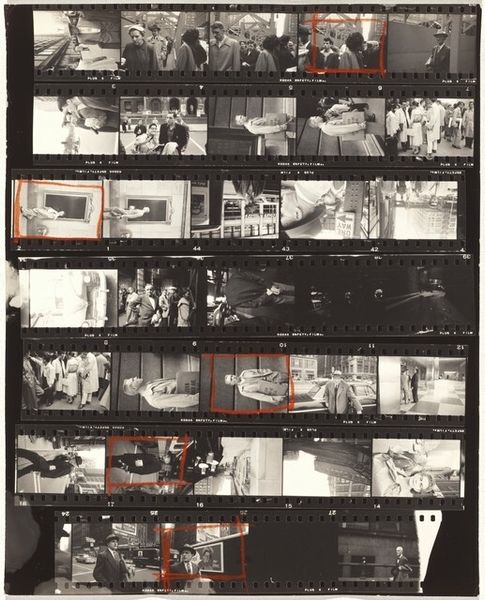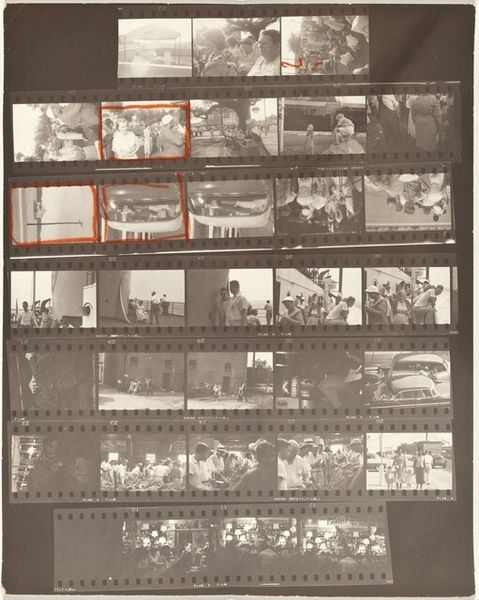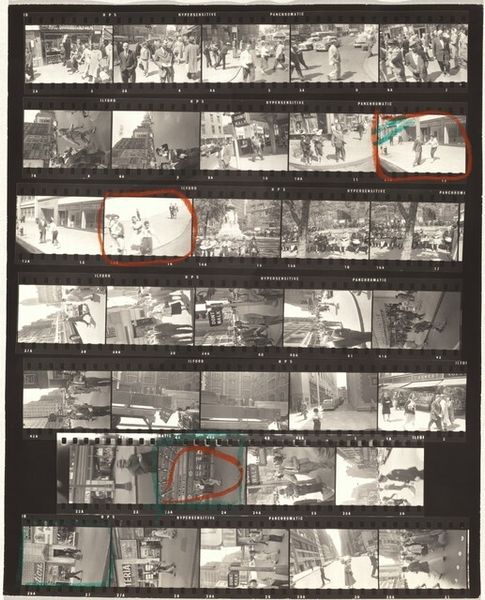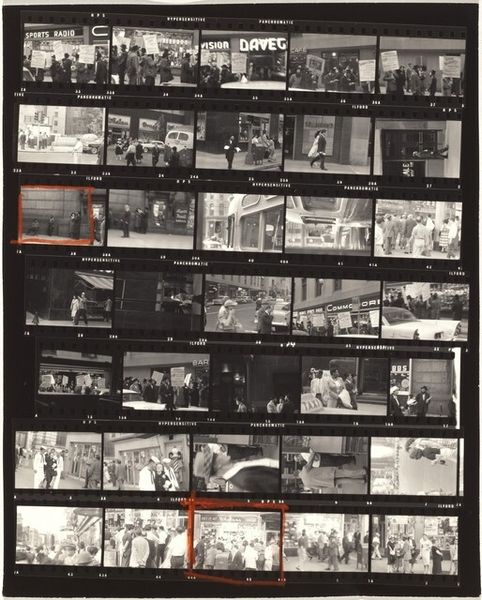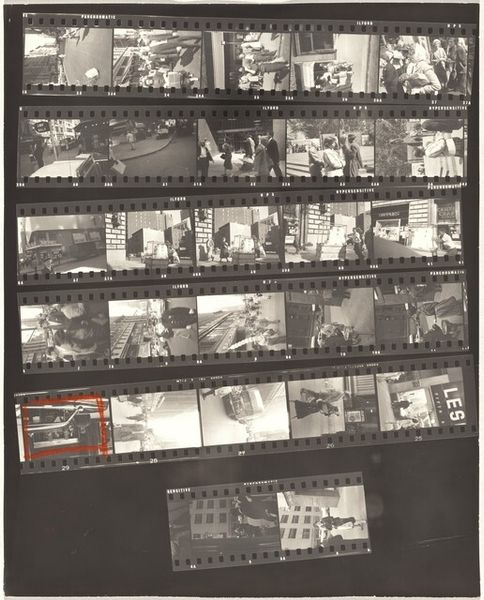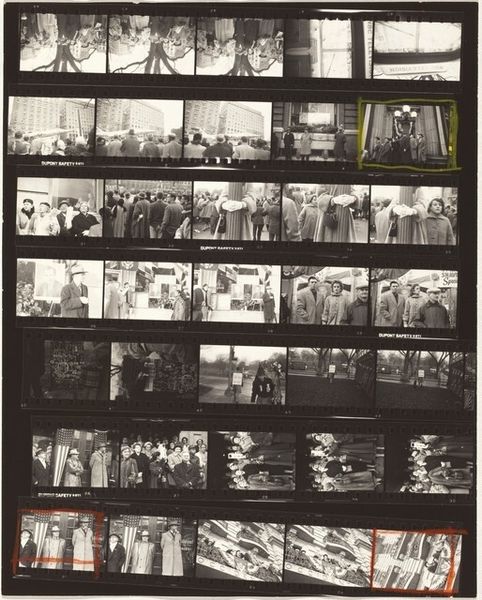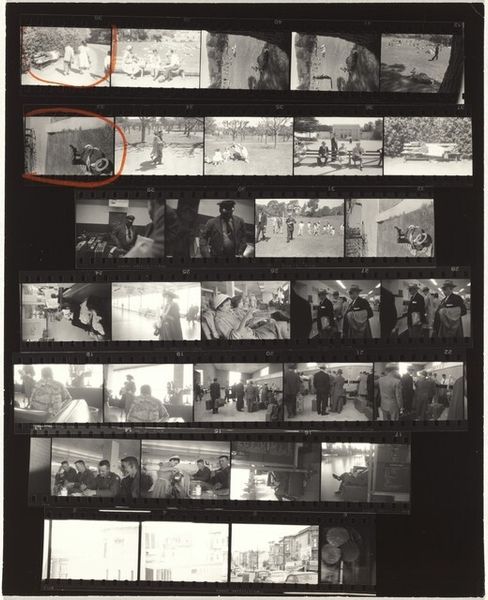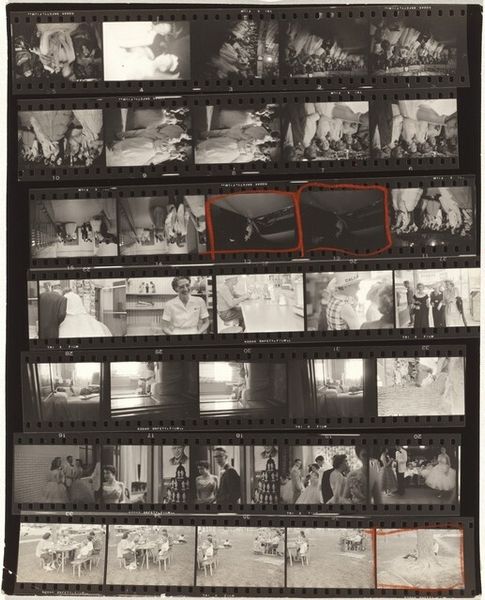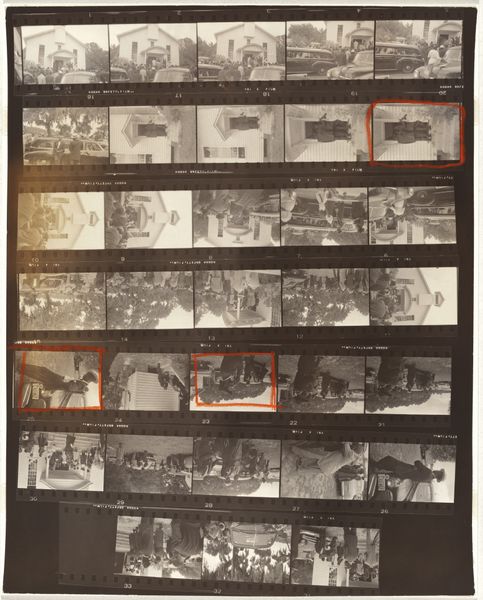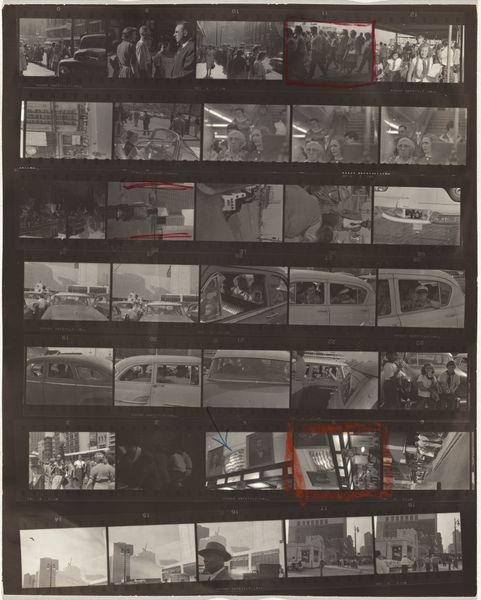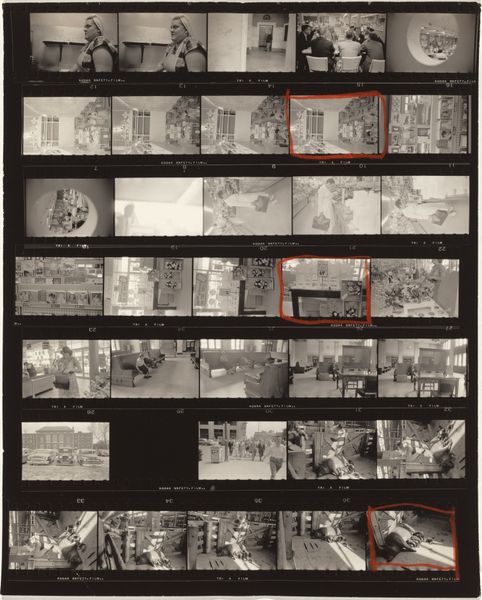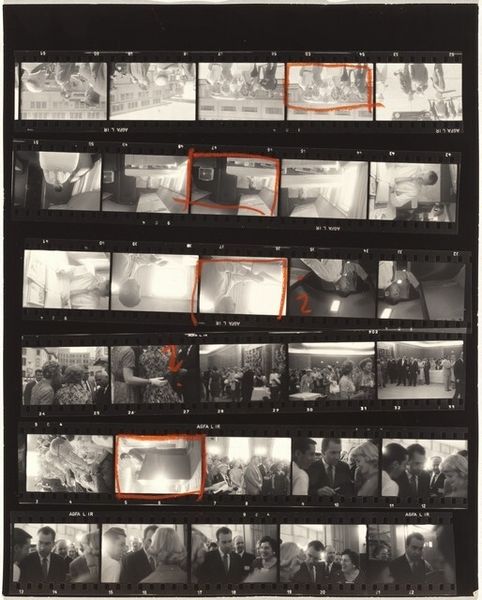
mixed-media, print, photography, gelatin-silver-print
#
portrait
#
mixed-media
#
film photography
# print
#
photography
#
gelatin-silver-print
Dimensions: overall: 25.2 x 20.2 cm (9 15/16 x 7 15/16 in.)
Copyright: National Gallery of Art: CC0 1.0
Curator: This gelatin silver print before us, “Guggenheim 733–Des Moines, Iowa” by Robert Frank, was taken in 1956 and offers us an array of scenes presented as a full contact sheet, an interesting decision. What do you make of it at first glance? Editor: Initially, there's a vulnerability to the unedited frame – almost as though we're peeking at a backstage view of photography itself. And those wedding images at the bottom…there's such potent symbolism baked into that. Curator: Yes, and this approach fits into a larger discourse around documentary photography. Frank wasn't just capturing images; he was presenting a narrative, and often a critical one, on American society. Notice the diversity of the frames surrounding images of wedding, street scenes, storefronts; what perspective does that give on that cultural phenomenon, weddings? Editor: Absolutely. It feels like a commentary on consumerism, gender roles, and societal expectations, doesn't it? The juxtaposition of ordinary moments—diners, street views—with the performative ritual of weddings highlights the artifice within these institutions. It is as if all social activity boils down to the same base elements, regardless of what they ostensibly symbolize. Curator: Precisely. The fact that it's a contact sheet allows us to analyze Frank’s process and the choices he made. What's excluded is just as significant as what's included, giving us clues about the dominant visual rhetoric of the time. Think about his controversial project “The Americans”. How does this contact sheet inform or reflect the spirit of that collection? Editor: It gives us insight into the origins of his subjects and the potential through-line within the selection of a variety of places in the urban grid. There’s also the meta-narrative – the contact sheet as an art object reflecting on the meaning of photography as an art object. What statements were possible then are viewed with a critical lens in our present. Curator: Indeed. Frank challenges the viewer to become an active participant, deciphering meanings within the visual fragments. Editor: Well said, by stripping the glossy veneer from idealized versions of weddings and cities and presenting the process with which one could achieve those images in that time, Frank pushes the public to become active investigators in the media that forms them.
Comments
No comments
Be the first to comment and join the conversation on the ultimate creative platform.
